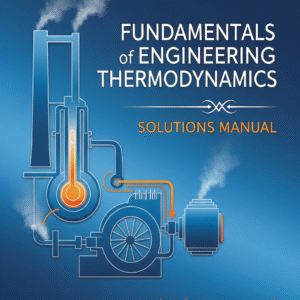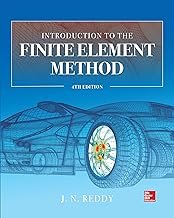Fox & McDonald’s Introduction to Fluid Mechanics, 9th Edition – The Ultimate Guide for Engineering Students
Introduction
For over four decades, Fox & McDonald’s Introduction to Fluid Mechanics has been the gold standard in fluid mechanics education, trusted by engineering students and instructors worldwide. The 9th Edition, authored by Pritchard, Mitchell, and Fox, continues this legacy with updated content, modern computational approaches, and enhanced problem-solving tools designed to prepare students for real-world engineering challenges.
This textbook remains the most widely adopted fluid mechanics resource in universities, offering a perfect balance between fundamental theory and practical applications. Whether you’re a mechanical, civil, or aerospace engineering student, this book provides the essential knowledge and problem-solving skills needed to excel in coursework, FE/PE exams, and professional engineering careers.
Why This Fluid Mechanics Textbook Stands Out
1. Unmatched Problem-Solving Methodology
One of the key strengths of this textbook is its structured, four-step problem-solving framework, which teaches students how to:
-
Define the problem clearly.
-
Plan the solution approach.
-
Execute calculations systematically.
-
Verify results for accuracy.
This methodology is reinforced with:
-
100+ new end-of-chapter problems covering real-world scenarios in aerodynamics, hydraulics, and HVAC systems.
-
Integrated example problems in every chapter, demonstrating how theoretical concepts apply to engineering practice.
-
Step-by-step solutions that help students develop analytical and critical thinking skills.
2. Comprehensive Coverage of Fluid Mechanics
The 9th Edition provides in-depth coverage of all critical topics, including:
Fundamentals
-
Fluid properties (density, viscosity, surface tension)
-
Fluid statics (pressure variation, buoyancy, manometry)
-
Fluid kinematics (flow visualization, streamlines, pathlines)
Advanced Topics
-
Control volume analysis (mass, momentum, and energy conservation)
-
Differential equations of flow (Navier-Stokes, Bernoulli’s equation)
-
Dimensional analysis & similitude (Buckingham Pi Theorem, model testing)
-
Viscous flow (pipe flow, boundary layers, drag and lift)
-
Turbomachinery (pumps, turbines, compressors)
This logical progression from basics to advanced applications ensures students build a strong foundation before tackling complex problems.
What’s New in the 9th Edition?
1. Modern Computational Fluid Dynamics (CFD) Examples
With the growing importance of CFD in engineering, this edition introduces:
-
Introductory CFD case studies to bridge theory and computational methods.
-
ANSYS Fluent and OpenFOAM examples (for students exploring simulation tools).
-
Comparison between analytical and numerical solutions to reinforce learning.
2. Updated Learning Tools for Better Engagement
-
Improved illustrations and diagrams – High-quality visuals to explain complex flow phenomena (shock waves, vortex shedding, turbulence).
-
Interactive eBook features – Embedded video solutions, animations, and quizzes for self-paced learning.
-
Revised data tables – Updated fluid property data for accurate problem-solving.
3. Real-World Engineering Applications
The 9th Edition emphasizes practical relevance with:
-
Case studies in aerospace, automotive, and environmental engineering.
-
Sustainability-focused problems (e.g., wind turbine efficiency, water conservation).
-
Emerging technologies (microfluidics, bioengineering applications).
Who Should Use This Textbook?
1. Undergraduate Engineering Students
-
Mechanical Engineers – Learn fluid dynamics for HVAC, turbomachinery, and propulsion systems.
-
Civil Engineers – Master hydraulics, open-channel flow, and pipe network design.
-
Aerospace Engineers – Study aerodynamics, compressible flow, and flight mechanics.
2. Graduate Students & Researchers
-
Review core principles before advanced coursework.
-
Apply CFD techniques in thesis or research projects.
3. Professional Engineers
-
Reference for FE/PE Exam prep (covers NCEES fluid mechanics topics).
-
Practical applications in process engineering, energy systems, and fluid machinery design.
Why This Is the Best Fluid Mechanics Textbook?
1. Most Widely Adopted in Engineering Programs
-
Used in top universities globally for its clarity, rigor, and practical approach.
-
ABET-aligned content ensures it meets accreditation standards.
2. Prepares Students for Engineering Careers
-
Teaches industry-relevant skills used in CFD analysis, hydraulic design, and aerodynamics.
-
Includes FE/PE exam-style problems for certification readiness.
3. Enhanced Digital Learning Experience
-
Interactive eBook with animations, video solutions, and self-assessment tools.
-
Instructor resources (PPT slides, solution manuals, test banks).
Final Thoughts
The 9th Edition of Fox & McDonald’s Introduction to Fluid Mechanics remains the definitive textbook for engineering students and professionals. With its updated problem sets, modern CFD examples, and real-world applications, it equips readers with the knowledge and skills needed to excel in fluid mechanics.
Whether you’re studying for exams, working on research, or solving engineering challenges, this book is an indispensable resource.
Get your copy today and master fluid mechanics with the most trusted g





